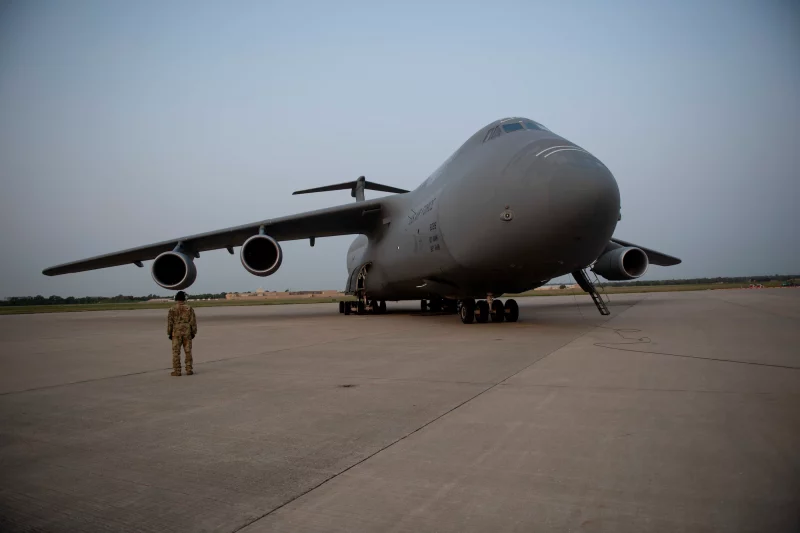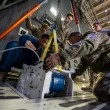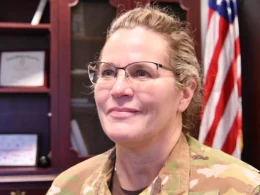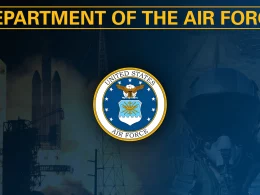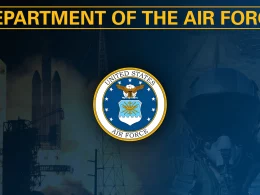TRAVIS AIR FORCE BASE, Calif. – Though not powered by magical reindeer nor loaded by elves, the C-5M Super Galaxy has proven through a bevy of mobility missions over the past six months that if something should ever happen to Santa’s sleigh, the airframe could serve as a worthy back-up.
The C-5, nicknamed “FRED-ex,” boasts an impressive payload-carrying capacity of more than 130 tons, the largest in the U.S. Air Force’s inventory. To put that figure into perspective, the C-5 can hold six Apache helicopters or multiple Abrams tanks with nary a hiccup.
More than a Santa’s bag full of odds and ends, though, the C-5 is routinely used to transport oversized cargo as well and single-unit behemoths that because of their weight or size would be impossible for a smaller aircraft to transport. From satellites to humanitarian aid to the recent mission moving critical cargo down range, the C-5 has demonstrated over the last half-century to be capable of taking what seem like insurmountable loads and transporting them to where they’re needed most.
In October, the 22nd Airlift Squadron at Travis Air Force Base, California, delivered 260,000 pounds of sensitive cargo for NASA — cargo that will be used in the launch of NASA’s James Webb Space Telescope into orbit.
The C-5 is a workhorse and a key component to how we at Team Travis rapidly project American power, said Col. Corey Simmons, 60th Air Mobility Commander.
“If you’ve ever seen a C-5 up close or even flying above, you know how big that aircraft is… it’s massive, and that’s the kind of missions it supports. Our C-5s support missions that no other aircraft can, and our C-5 Airmen have mastered how to use every inch of the space effectively and efficiently so each cargo load is quickly and successfully delivered.”
The C-5 also aids in reinforcing the U.S.’s commitment to allied and strategic partner nations around the world by delivering cargo as part of the Department of Defense’s foreign military sales program.
In July, the 9th Airlift Squadron at Dover Air Force Base, Delaware, delivered two CH-47F Chinook helicopters to Royal Australian Air Force Base, Townsville, Australia to aid the Australian Army. The successful delivery of the helicopters was another example of how C-5 Airmen continue to deepen interoperability with U.S. allies and partner nations.
“The C-5 is a stalwart aircraft for the Air Force, and these latest missions validate the continued demand for large-scale mobility operations,” said Col. Matt Husemann, 436th Airlift Wing commander and C-5 pilot. “As the country’s need for rapid global mobility persists, the C-5 will provide unique, strategic capabilities unmatched by any other airframe in the DoD inventory.”
While the aircraft itself is impressive, it doesn’t take off on spirit alone, it takes a team of qualified Airmen to make it fly.
Though they are not elves, Airmen assigned to the base’s 26-strong fleet of C-5M aircraft have something that gives even Yuletide magic a run for its money: experience.
Even in the midst of delivering humanitarian aid to the Dominican Republic in October, C-5 loadmasters were able to leverage the mission into a training opportunity for their up-and-coming colleagues, maintaining the Air Force’s commitment to its partners while accomplishing manning requirements for their career field.
“The training opportunities impact every crew member,” Capt. Adam Stoll, 22nd Airlift Squadron pilot and aircraft commander, said of the mission. “The training our unqualified loadmasters, flight engineers and pilots receive from this accelerates their upgrade training to become qualified.”
While the humanitarian mission focused on the C-5’s ability to bring glad tidings on this planet, the extent by which it leaves its mark is now limited only to the great expanse of space thanks to a recent partnership with NASA.
In September and October, Airmen from Travis AFB endeavored to load and transport more than 260,000 pounds of support cargo for the launch of NASA’s new James Webb Telescope.
The telescope, a multi-nation-funded project to replace the Hubble Space telescope as NASA’s Flagship astrophysics mission, aims to “find the first galaxies that formed in the early universe and peer through dusty clouds to see stars forming planetary systems,” according to NASA.
Not only was the mission a boon for the project and the space community at large, but it also allowed Travis AFB’s C-5 crew the chance to flex their mobility muscle.
“Opportunities like this give us a chance to showcase our flexibility,” Tech. Sgt. Raphael Milton, 60th Aerial Port Squadron non-commissioned officer in charge of load planning and data records, said of the movement. “As a load planner, not only can we inspect and plan the cargo load, but we can also build and move cargo.”
Although 140 tons might pale in comparison to Santa’s seemingly infinite payload capacity, the heavy aircraft shows no signs of throttling down. With a whole new year of missions on the horizon for the 51-year-old goliath, its longevity shows in every successful mission flown and every ton loaded onto its hulking frame.
As Simmons puts it: “If Santa’s sleigh ever gets stuck in the shop, we’re the ones to call.”




